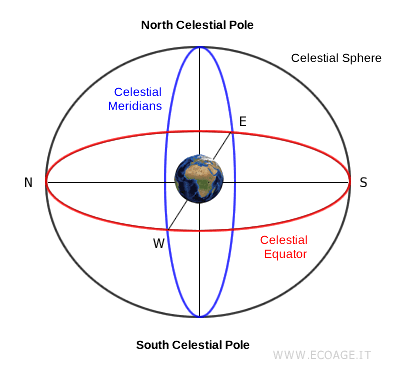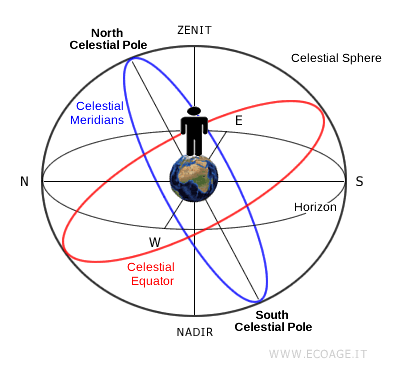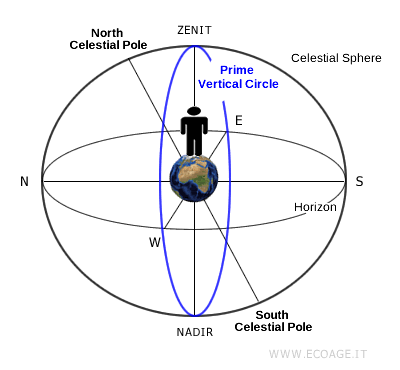Celestial Sphere
The celestial sphere is an imaginary dome surrounding us, onto which all stars and celestial objects appear to be pinned, as though they're all the same distance away. Depending on how you look at it, this sphere can have different centers: it might be geocentric (centered on Earth), local (centered on the observer), or heliocentric (centered on the Sun).
The idea of the celestial sphere dates back to ancient Ptolemaic cosmology, which imagined the stars and planets attached to huge crystal spheres revolving around Earth. Although modern astronomy has left that model behind, the celestial sphere is still an incredibly useful way to map and describe the sky as seen from Earth.
On the celestial sphere, the observer is placed right at the center. From this perspective, the stars and planets seem to rotate around you. Two of the most important reference points are the celestial poles, which extend Earth's axis of rotation out into space, and the celestial equator, an imaginary circle halfway between the poles. The celestial equator divides the sky into northern and southern hemispheres. Circles that run parallel to it are called celestial parallels.

Other key circles on the sphere include the celestial meridians, which are great circles passing through both celestial poles, and the celestial parallels, which are smaller circles parallel to the celestial equator. Another major circle is the ecliptic, which traces the apparent path of the Sun across the sky throughout the year. The ecliptic is tilted by about 23° compared to the celestial equator. The points where the ecliptic crosses the celestial equator are called the equinoctial points.

From your vantage point on Earth, the zenith is the point in the sky directly overhead. The nadir is the exact opposite point, directly beneath your feet. The plane that's perpendicular to your vertical line and passes through Earth's center, intersecting the celestial sphere, is known as the horizon (also called the celestial or astronomical horizon).

All circles perpendicular to the celestial horizon and running through both the zenith and nadir are called vertical circles. Unlike celestial meridians, vertical circles don't pass through the celestial poles. The vertical circle that runs through East (E) and West (W) is called the prime vertical circle.

So what's the difference between the Zenith/Nadir and the celestial poles? The zenith and nadir change depending on where you're standing on Earth - they're unique to your specific location. The celestial poles, on the other hand, are defined by Earth's axis of rotation and stay fixed in the sky, no matter where you are. In short, the zenith and nadir shift as you move around the globe, while the celestial poles remain constant for all observers.
To pinpoint the positions of stars and other celestial objects, astronomers use coordinate systems based on these reference points. Another crucial reference is the astronomical horizon - the plane perpendicular to the vertical line stretching from Earth's center to the observer. This vertical line intersects the celestial sphere at two key points: the zenith overhead and the nadir below.
Most stars you see in the night sky are what astronomers call fixed stars. They maintain the same positions relative to one another on the celestial sphere, providing a stable backdrop for tracking the movements of other objects. These stars are organized into constellations, which have guided stargazers for thousands of years.
